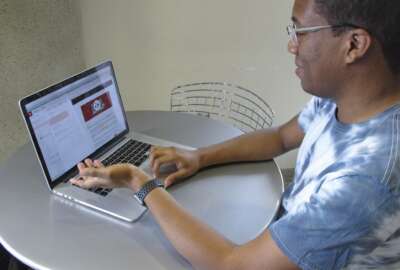
DEA doesn’t miss a step in its transition to a secure remote workforce
How the DEA made the move away from the pre-COVID office life to telework was aided by already having the foundation in place.
The way the Drug Enforcement Administration made the move from pre-COVID office life to what the federal workforce has been living through since March was aided by already having the foundation in place to transition to a large-scale, secure remote workplace.
“We were positioned pretty well, because we had a pretty mobile workforce already,” Deputy Assistant Administrator of the Information Systems Division at DEA Maura Quinn said to Federal News Network’s Jason Miller on Federal Monthly Insights – Secure Remote Workforce. “Our workforce already had mobile devices, so smartphones, and we have mobile device management, so we manage those phones securely. So we were in good shape there. And we already had a virtual desktop interface (VDI) solution and also we had a virtual private network (VPN) solution.”
But, although the system was in place, with so many at the agency using them, DEA had to expand that universe — and they had to do it fast.
“Before COVID, on the VDI side, we could support about 1,200 concurrent users. And on the VPN side, we could support about 900. We have about 15,000. So that wasn’t going to work for us,” Quinn said.
So Quinn met with her team and asked them what they needed to do to expand their secure remote workplace capabilities, sooner rather than later.
“By the time COVID came around and we had the requirement to go to max telework, we were able to support 10,000 on our VPN, and eventually we were able to support and can support about 2,500 on our VDI. That’s concurrent users. So we were in pretty good shape,” Quinn said.
VPN supports 10,000 laptops at DEA that can only be used on an internal network, getting access using a PIV Card or multi-factor authentication.
“Using our internal network laptop, we can access our internal network. So 10,000 of our workforce could do it that way concurrently. And then VDI, basically bring your own device or you bring another government’s device, and again, you can sign in that way using the credentials that we provide. So we can support a total of 12,500 concurrent users,” Quinn said.
Although they worked fast to get into the position they are in today with their secure remote workforce, DEA is planning on adding additional functionality.
“[We’re looking for] ways where the workforce that is out in the field, and maybe not in the office, can move data from a smartphone into our environments, to be able to scan documents, to be able to move evidence around securely in different ways,” Quinn said.
DEA got up to speed quickly and is moving along smoothly. But now, Quinn said, they might be suffering from “telework fatigue.”
“People are tired of sitting in their homes and would like to get back into the office. I think in the long run, having a better mix of telework and in person work will be something that we’ll strive for,” she said.
Copyright © 2025 Federal News Network. All rights reserved. This website is not intended for users located within the European Economic Area.
Peter Musurlian is a producer at Federal News Network.
Follow @PMusurlianWFED
Related Stories





